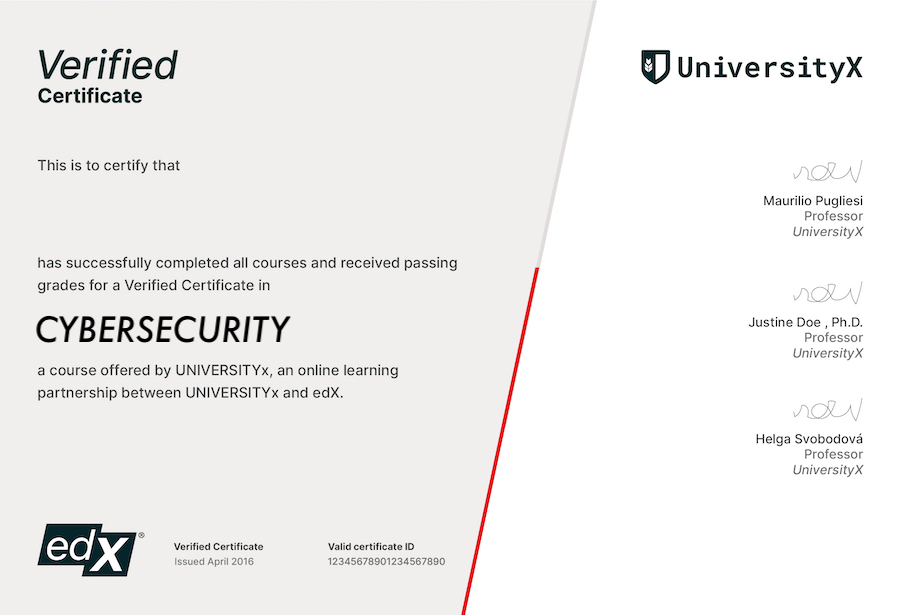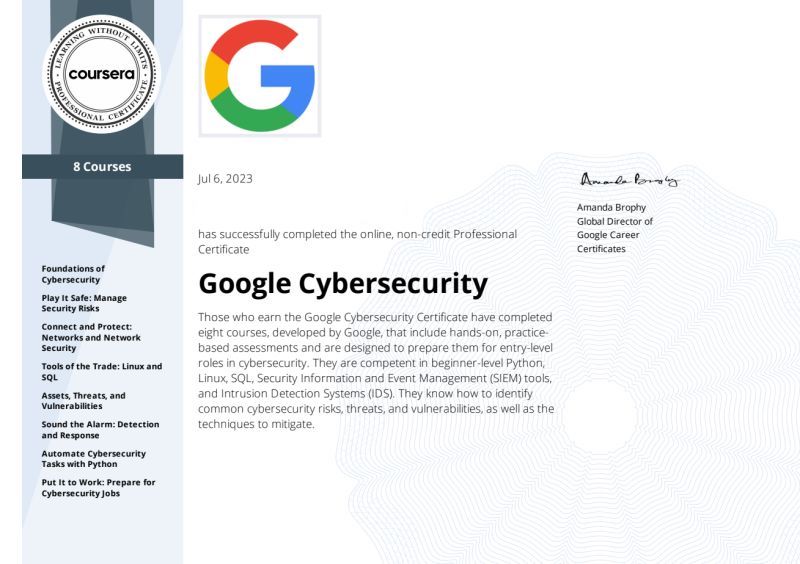The Ultimate Roadmap: How to Become a Cybersecurity Analyst
How to Become a Cybersecurity Analyst
In modern technology of cybersecurity, there is a growing demand for individuals with the knowledge and skills to protect networks, systems, and data from the relentless onslaught of cyber threats. The role of a cybersecurity analyst stands as a formidable bulwark against these relentless threats, defending organizations by identifying vulnerabilities, responding to security incidents, and implementing robust security measures. If you’re wondering how to become a cybersecurity analyst, this article is your comprehensive guide, illuminating the path towards this dynamic and rewarding career in cybersecurity.
The journey to becoming a cybersecurity analyst is steeped in rigorous study, hands-on experience, and essential certification. A degree in cybersecurity or related fields such as computer science forms the bedrock of knowledge for this role, while entry-level cybersecurity jobs provide invaluable, real-world exposure to the cybersecurity industry. The acquisition of a cybersecurity certification, such as the esteemed Certified Information Systems Security Professional (CISSP), can significantly elevate your career prospects.
According to the Bureau of Labor Statistics, the demand for cybersecurity analysts is projected to grow significantly, promising a bright future for those seeking a career in this cybersecurity analyst job. So, let’s embark on this exciting journey and learn the nuts and bolts of how to become a cybersecurity analyst.
Understand the Basics of Cybersecurity
Unraveling the world of cyber threats, it is crucial to know that cybersecurity analysts work tirelessly to protect organizations from cyber attacks. Understanding the types of cyber threats is the first step on how to become a cybersecurity analyst.
Once known, the focus shifts to learning cybersecurity fundamentals and mastering best practices for cybersecurity. This knowledge, alongside the right certification, can secure an analyst job.
A career in cybersecurity also involves hands-on experience with cybersecurity technologies and tools, which are vital to prevent security breaches. The cybersecurity industry keeps evolving, making a degree in cybersecurity and continued learning essential.
Types of Cyberthreats
Now that we’ve whet your appetite for the grand world of cybersecurity, let’s delve deeper into its heart, where the real action takes place. Picture this, the average cyber security analyst is a digital knight, wielding knowledge and tools instead of swords and shields, standing guard over a kingdom of sensitive data. It’s a battlefield out there, teeming with various cyber threats that seek to breach the castle walls.
Don’t fret, though. It’s not all doom and gloom. Understanding these threats is the first step in learning how to become a cybersecurity analyst. Let’s start by understanding the common types of cyberthreats.
Imagine a dark alleyway, a cyber version of it, inhabited by creatures of the night. These creatures are the cyber threats lurking in the shadows of the internet. They come in various shapes and forms, each one more menacing than the other. Malware, a sneaky thief, camouflaged and waiting for an opportune moment to strike. Phishing, a deceptive trickster, masquerading as a trustworthy entity to lure its victims. Ransomware, a threatening blackmailer, holding your data hostage until a ransom is paid.
Best Practices for Cybersecurity
Stepping from the shadows of potential threats, let’s shed some light on the Best Practices for Cybersecurity. Imagine navigating through a labyrinth of digital information, with the role of a cybersecurity analyst as your guiding star.
To prevent security breaches, it’s essential to keep software and systems up to date. Picture a medieval fortress, its robust walls representing the latest security patches and updates. Outdated software resembles a crumbling fortress, vulnerable to the relentless siege of cyber threats.
Just as a chief information security officer coordinates the defense of the fortress, so does a network security policy coordinate the defense of a digital infrastructure. It’s a map, detailing the layout of the labyrinth and outlining the roles and responsibilities of its defenders, the cybersecurity professionals.
The security measures in place are like the fortress’s vigilant guards, constantly monitoring and responding to security incidents. These include firewalls, antivirus software, and intrusion detection systems. Each plays a unique role in preventing a cyber attack, much like archers, footmen, and knights each have a unique role in a fortress’s defense.
Education forms the cornerstone of these practices.
Cybersecurity Technologies and Tools
Swinging the spotlight onto the realm of Cybersecurity Technologies and Tools, there’s a colorful tapestry of software and techniques that cybersecurity analysts employ to fortify the digital frontiers.
Stepping into the gallery of cybersecurity technologies, one encounters the stalwart firewall, a sentry standing guard at the network’s gateway, repelling unwarranted intrusions. Intrusion Detection Systems (IDS) and Intrusion Prevention Systems (IPS) follow suit, acting as vigilant observers and protectors, identifying potential threats and taking immediate actions, respectively.
Next, the Security Information and Event Management (SIEM) system takes center stage. It’s the curator of cybersecurity, collecting, managing, and analyzing security events in real-time. SIEM gives the cybersecurity analyst a panoramic view of the network landscape, helping them identify patterns and trends in cyber threats.
Voyaging further into the technology landscape, the cybersecurity tools section houses an array of gadgets that simplify the cybersecurity analyst’s job. Antivirus software, with its ever-evolving catalog of threat signatures, is a cybersecurity professional’s first line of defense. Encryption tools further fortify the security measures, transforming sensitive data into indecipherable codes to prevent security breaches.
Automated penetration testing tools stand on the frontline, relentlessly probing the system for weaknesses.
Develop Knowledge and Skills
Developing knowledge and skills is a pivotal step to become a cybersecurity analyst. Begin with networking fundamentals, understanding how data transfers and networks operate. This base knowledge aids in securing networks from cyber threats and aids in the analyst role. Then, delve into Operating Systems.
A cybersecurity professional must comprehend various operating systems to prevent security breaches. Finally, familiarize with Security Protocols. These guidelines are crucial to protect organizations from cyber attacks and respond effectively to security incidents. This comprehensive understanding prepares for a fulfilling career as a cybersecurity analyst, equipped to handle complex security measures.
Networking Fundamentals
Transitioning from understanding the basics of cybersecurity, let’s delve into the intriguing world of Networking Fundamentals. A foundational pillar in the quest on how to become a cybersecurity analyst, networking fundamentals form the base of the cybersecurity pyramid.
Imagine a bustling city, with roads connecting every nook and cranny, facilitating smooth transportation. Now, envision this in the realm of the internet – a world where data packets are the vehicles and network protocols, the traffic rules.
Networking Fundamentals is the study of this complex, yet fascinating web of connections. It’s the primer for anyone aspiring to a cybersecurity analyst job, where deciphering the patterns of data traffic to prevent security breaches becomes the norm.
This subject uncovers the layers of the internet protocol suite, familiarizing you with terms like TCP/IP, routers, and switches. It details how data flows from one device to another, and how security measures, like firewalls and network security, protect these data highways from intruders.
A deep understanding of networking fundamentals is a must for any budding cybersecurity professional. It could set the stage for tackling cyber threats effectively, and eventually landing that coveted cybersecurity analyst job. So, buckle up and get ready to explore this exciting start to your cybersecurity career path.
Operating Systems
Having dabbled in the basics of cybersecurity, let’s now dive into the fascinating world of Operating Systems. This is a critical step in understanding how to become a cybersecurity analyst.
Operating Systems act as the foundation on which all other applications and software run. They manage hardware resources, provide services for application software, and act as an intermediary between users and the computer hardware. Understanding Operating Systems is crucial for a cybersecurity professional as they often serve as the first line of defense against cyber threats.
When it comes to cybersecurity, the Operating System can either be a strong ally or a weak link. For instance, an outdated Operating System can be riddled with vulnerabilities that cyber criminals can exploit, leading to security breaches. On the other hand, a well-maintained and updated Operating System can help prevent security breaches and fend off cyber attacks.
A cybersecurity analyst must understand the intricacies of different Operating Systems, their vulnerabilities, and how to strengthen them. This knowledge is essential for implementing effective security measures and responding to security incidents promptly.
So, if the ambition is to become a cybersecurity analyst, delving deep into the realm of Operating Systems is an essential step. This will not only enrich the cybersecurity fundamentals but also solidify the career path towards a rewarding cybersecurity job.
Security Protocols
Transitioning from grasping the basics, let’s delve deeper into the core of cybersecurity. One cannot underestimate the significance of Security Protocols when aiming to become a cybersecurity analyst.
Security protocols form the backbone of the cybersecurity world. They are established sets of rules that dictate how information is transferred securely over a network. For a cybersecurity analyst, understanding these protocols is similar to a sailor understanding the signals of the sea.
A common protocol every cybersecurity professional should know is the Secure Sockets Layer (SSL). This protocol encrypts data between a web server and a browser, ensuring safe transmission. It’s like a secret language only the sender and receiver can understand, preventing any eavesdropping.
Another vital protocol is the Internet Protocol Security (IPSec). IPSec ensures the authenticity and integrity of packets sent and received over an IP network. Imagine it as a trustworthy courier service, guaranteeing that the package (data) reaches its destination untouched and unchanged.
Hence, mastering security protocols is undoubtedly a significant milestone in the journey of learning how to become a cybersecurity analyst. It’s like acquiring the keys to safeguard the digital realm, a superpower every cybersecurity analyst should possess.
Obtain the Necessary Certifications
Embarking on the journey of how to become a cybersecurity analyst begins with obtaining the necessary certifications. The Certified Information Systems Security Professional (CISSP) is a globally recognized certification to validate your skills to design, implement, and manage a best-in-class cybersecurity program.
The Certified Ethical Hacker (CEH) certification, on the other hand, equips you with the knowledge to secure systems against malicious hackers. The Certified Information Systems Auditor (CISA) certification is perfect for those who want to focus on auditing, control, and security of business environments.
Certified Information Systems Security Professional (Cissp)
Having armed oneself with the requisite knowledge and skills, it’s time to take the next step on the path to becoming a cybersecurity analyst: obtaining the necessary certifications. One such certification that stands out in the cybersecurity field is the Certified Information Systems Security Professional (CISSP).
Recognized globally as a standard of achievement, the CISSP is an essential certification for those looking to become a cybersecurity analyst. It’s a testament to an individual’s deep technical and managerial knowledge and experience to effectively design, engineer, and manage the overall security posture of an organization.
The CISSP is not just any certification; it’s an affirmation of an individual’s commitment to cyber excellence, a badge of honor that sets them apart in the cybersecurity job market. It opens up opportunities for an analyst role that goes beyond the ordinary job description. A certified information systems security professional is seen as more than just an employee; they are valued as a strategic investment, a bulwark against security breaches who can implement and manage security measures effectively.
According to the Bureau of Labor Statistics, the demand for cybersecurity professionals, especially those with a CISSP certification, is projected to grow exponentially. This certification can significantly boost an analyst salary, reflecting the high value organizations place on certified professionals.
Certified Ethical Hacker (Ceh)
Transitioning from the realm of knowledge and skills, the journey to becoming a cybersecurity analyst takes an exciting turn towards obtaining the necessary certifications. One of these vital certifications is the Certified Ethical Hacker (CEH).
Imagine a landscape where the fight against cyber threats is constant and exciting. In this landscape, a CEH stands as a skilled professional who understands how to think like a black hat hacker, providing a unique perspective to the cybersecurity industry. This certification opens up the door to the analyst role, making one well-equipped to prevent security breaches and respond to security incidents.
How to become a cybersecurity enthusiast who’s always a step ahead of cyber attacks? It’s simple. By earning the CEH certification, one dives deep into the hacker’s mind and learns cybersecurity fundamentals needed to protect organizations from cyber attacks.
The certification course covers security systems, data security, and network security, among other critical topics. The journey of becoming a cyber security analyst becomes more exciting with the CEH certification. It provides a deeper understanding of the security field, making it easier to land a cybersecurity analyst job.
The Bureau of Labor Statistics shows an increased demand for cybersecurity professionals, especially those with a CEH certification. This makes the path to the cybersecurity analyst position more achievable and rewarding.
Certified Information Systems Auditor (Cisa)
Having laid a solid foundation through gaining knowledge and skills, it’s time to take the next step on the path to becoming a cybersecurity analyst. The transition to the practical aspects of this journey starts with obtaining the necessary certifications, and one of the most important for anyone looking to enter this field is the Certified Information Systems Auditor (CISA) certification.
This globally recognized certification is the standard of achievement for those who audit, control, monitor, and assess an organization’s information technology and business systems. It doesn’t just add a feather to the cap of the cybersecurity analyst but also adds a layer of credibility to their analyst job.
The CISA certification focuses on the importance of IT governance, emphasizing its role in ensuring operational effectiveness. It covers topics such as information systems acquisition, development, and implementation, as well as information systems operations and business resilience.
This certification is particularly vital for those in the analyst role, who are often responsible for implementing and maintaining security measures to prevent security breaches. Moreover, the CISA certification is recognized by the Bureau of Labor Statistics as a key certification for those pursuing a career as a cybersecurity analyst.
In the cybersecurity job market, a CISA certification can differentiate a cybersecurity professional from the rest of the pack.
Get Practical Experience
In the journey of how to become a cybersecurity analyst, practical experience plays a pivotal role. Starting with internships and volunteering can help develop essential skills. Being a network security analyst involves safeguarding an organization’s data, an experience that evolves with hands-on involvement.
The role of a cybersecurity researcher further broadens this spectrum, exploring new ways to thwart cyber threats. These positions not only provide a comprehensive understanding of the analyst’s job description but also pave the way to a promising cybersecurity career.
Internships and Volunteering
While the journey to how to become a cybersecurity analyst undeniably requires appropriate certification, it doesn’t end there. The road to becoming an exceptional cybersecurity analyst is paved with practical experience.
Dive into the cyber world with internships and volunteering. These opportunities provide an invaluable exposure to the inner workings of the cybersecurity industry. An internship can serve as the ideal start of a career in cybersecurity. Often, internships offer a hands-on experience that goes beyond the theoretical knowledge acquired from a degree in cybersecurity.
Volunteering at cybersecurity events or organizations provides a fantastic opportunity to network with seasoned professionals. Such interactions lead to the cultivation of essential industry insights. Moreover, volunteering can often open doors to cybersecurity analyst job opportunities.
The journey to become a cybersecurity analyst is certainly demanding, but the rewards are worthwhile. According to the bureau of labor statistics, the demand for cyber security analysts is expected to grow significantly over the next decade. This, coupled with the increasing cyber threats and escalating need for robust security measures, makes the role of a cybersecurity analyst all the more crucial.
Network Security Analyst Positions
Brace yourself for the journey ahead because the certification is only the tip of the iceberg. The real adventure begins when stepping into the world of Network Security Analyst Positions.
Visualize the bustling office space, the hum of servers in the background, the tension in the air as cybersecurity professionals diligently monitor their screens, looking for signs of cyberthreats or security breaches. That could be the next stage of the adventure in becoming a cybersecurity analyst.
Network Security Analyst Positions offer the opportunity to directly apply the knowledge gained from certification courses in cybersecurity. Picture the analyst’s role, as a vigilant watchdog, using their expertise to prevent security breaches and defend against cyber attacks.
Imagine the thrill of working in a field where every day presents a new challenge. The job description for a network security analyst is diverse, with tasks ranging from developing security measures to responding to security incidents. It’s a role that demands constant learning and adaptation.
According to the Bureau of Labor Statistics, the demand for cybersecurity professionals, especially those in analyst roles, is set to grow exponentially. With the average cyber security analyst salary being highly competitive, this career path is not just emotionally rewarding but also financially beneficial.
Remember, the journey to become a cybersecurity analyst is filled with opportunities for growth and learning.
Cybersecurity Researcher Positions
Having dived into the world of certifications, you’re probably eager to know more about how to become a cybersecurity analyst. Step into the realm of cybersecurity researcher positions to explore another pathway on your journey to becoming an information security analyst.
Painting a vivid picture of the cybersecurity analyst job, imagine being at the forefront of the cybersecurity world, fighting cyber threats, and protecting systems from security breaches. This role is a crucial part of the cybersecurity industry, as it involves conducting in-depth research on current and emerging cyber threats, recommending security measures, and developing strategies to prevent security breaches.
Becoming a cybersecurity researcher involves a high level of expertise. Often, a bachelor’s degree in cybersecurity or a degree in computer science is required, alongside a cybersecurity certification. For this role, understanding cybersecurity fundamentals and staying updated with the latest trends in security measures is vital.
Notably, cybersecurity researchers often work behind the scenes, investigating cyber attacks, analyzing security incidents, and developing new ways to defend against cyber crimes. It’s an exciting, dynamic role that offers a unique perspective on the cybersecurity field.
As per the Bureau of Labor Statistics, there’s a growing demand for cybersecurity professionals.
Find a Mentor
In the journey of how to become a cybersecurity analyst, the quest to find a mentor is pivotal. Engaging in networking with professionals paves the way to meet seasoned cybersecurity professionals, who add value to the cybersecurity career path. Moving on, attending conferences and events offers an opportunity to gain insights into the cybersecurity industry, understand the analyst job description, and learn about recent cyber threats.
Lastly, joining professional organizations opens doors to exclusive resources, certifications, and networking opportunities, arming an aspiring cybersecurity analyst with the tools to prevent security breaches and succeed in their cybersecurity job.
Networking with Professionals
Seamlessly transitioning from gaining hands-on experience, let’s delve into the pulsating world of Networking with Professionals. This is a foundational step in understanding how to become a cybersecurity analyst. Imagine being in a room filled with seasoned cybersecurity professionals, sipping coffee, and discussing the latest cyber threats.
The ambiance of such a setting is not just about casual conversations, it’s a gold mine of opportunities to learn, connect, and grow. The chatter of these professionals reverberates with a wealth of knowledge on how to become a cybersecurity analyst, the latest security measures to prevent security breaches, and much more.
It’s like stepping into a live version of a cybersecurity fundamentals course, but with a twist. There’s no textbook, no classroom, just a bunch of professionals sharing their knowledge, experiences, and tips on how to ace the cybersecurity career path.
This setting could very well be a networking event, a seminar, or a casual get-together. But the bottom line remains the same – to learn, connect, and grow. Networking with professionals can provide insights about the cybersecurity industry that no textbook or online cybersecurity program can offer.
Attending Conferences and Events
Drifting from the hands-on realm of practical experience, the journey towards becoming a cybersecurity analyst takes a slight detour, wandering into the bustling arenas of conferences and events. An absolute delight for those looking to absorb knowledge, attending these gatherings provides a fantastic opportunity to dive into a pool of shared expertise and emerge with a wealth of insights.
Imagine walking into a grand hall, filled with vibrant banners and buzzing conversations. Everywhere you look, discussions on security breaches, cyber threats, and the latest security measures take place, painting a vivid picture of the ever-evolving cybersecurity landscape. This is the world of conferences and events, a crucial stepping stone on the path of how to become a cybersecurity analyst.
The atmosphere is electric with the collective passion for cybersecurity. Stalls and presentations make complex concepts like data security, network security, and cybersecurity fundamentals easily digestible, breaking down the intimidating barriers of the field. The opportunity to interact with experienced professionals, including the highly respected chief information security officer, adds a golden feather to the experience.
A sprinkle of starlight comes from the special sessions, where the heroes of the cybersecurity industry share invaluable insights.
Joining Professional Organizations
Moving from practical experience, the journey on how to become a cybersecurity analyst pivots towards joining professional organizations. These organizations serve as a beacon, guiding those seeking to become a cybersecurity analyst through the often choppy waters of cyber.
Like a lighthouse illuminating a dark sea, professional organizations provide guidance and educational resources to help in understanding the intricate tapestry of cybersecurity fundamentals. They offer opportunities to connect with seasoned cybersecurity professionals, providing a platform to share insights and experiences.
The benefits can be likened to a treasure trove of resources. They offer certification programs, which act as a golden key, opening doors to coveted cybersecurity analyst jobs. These certifications, like the renowned Certified Information Systems Security Professional certification, serve as a testament to your knowledge and skills, adding a gleaming jewel to the crown of your resume.
Professional organizations also act as a radar, keeping members updated with emerging cyber threats and security measures, helping them stay ahead of the curve in this dynamic field. Membership in such organizations signifies a commitment to the cybersecurity industry, shining a favorable light on you in the eyes of potential employers.
Ultimately, these organizations can provide a sturdy scaffold in the construction of your career as a cybersecurity analyst.
Stay up to Date on Cybersecurity Trends
Navigating the cybersecurity landscape requires strategic methods for staying informed. Reading Professional Publications offers a wealth of knowledge, highlighting latest findings and emerging trends. This provides useful insights on how to become a cybersecurity analyst.
Following Leaders in the Field offers a real-world perspective on handling cyber threats, shaping your cybersecurity career. It can help in understanding the analyst role and the certification needed.
Participating in Online Discussions on cybersecurity fundamentals fosters a dynamic learning environment. It’s an avenue for honing skills, responding to security incidents, and discussing security measures to prevent security breaches.
Reading Professional Publications
Transitioning from the nurturing guidance of a mentor, the journey to become a cybersecurity analyst involves a keen understanding of the currents of change. Picture a leaf, afloat on the surface of a swiftly flowing river, keeping pace with the rush of the water. That leaf symbolizes the cybersecurity analyst, keeping pace with the constant flow of new information and trends in the field.
One may wonder how to stay on top of these changes. The answer lies in the power of professional publications. Picture an endless library filled with the most up-to-date, reputable, and relevant publications. These are not just books but gateways to knowledge, each one opening up a new world of understanding in the realm of cybersecurity.
From the nitty-gritty details of recent security breaches to the latest security measures being employed, publications such as The Information Security Journal, The Journal of Cybersecurity, and Cybersecurity Science, among others, serve as invaluable resources. In the rapidly evolving digital world, they provide an essential link to the most current and crucial information in the field.
Just as a gardener needs to understand the nature of the soil and the needs of the plants, a cybersecurity professional needs to comprehend the landscape of cybersecurity.
Following Leaders in the Field
Just as a budding gardener would look to seasoned horticulturists for guidance, those on the journey of learning how to become a cybersecurity analyst should follow leaders in the field. Imagine a gentle stream meandering through a lush, vibrant forest. Each droplet in the stream carries a wealth of knowledge, similar to the wisdom and expertise that industry leaders possess.
To truly immerse oneself in the world of cyber security, it is essential to follow these cybersecurity professionals. Their insights and experiences can serve as invaluable lessons for those aiming to land a cybersecurity analyst job in the future. The field is constantly evolving, with new security measures being developed to prevent security breaches. These industry stalwarts are often the first to respond to these changes, making their insights key to staying ahead of the curve.
Following such leaders is akin to having a bird’s eye view of the cyber threats landscape. It allows for a comprehensive, real-time understanding of the challenges and developments in the industry. Keep an eye on their public presentations, interviews, and social media posts. These platforms offer a wealth of information and insight into the mind of a cybersecurity expert.
Consider this a critical step in the journey to become a cyber security analyst.
Participating in Online Discussions
Just as a mentor can guide through the cybersecurity landscape, similarly online discussions can provide a deeper understanding of the field’s nuances. Let’s dive into how participation in online discussions can contribute to becoming a successful cybersecurity analyst.
Being part of online discussions is like having a finger on the pulse of the cybersecurity industry. It provides a platform to interact with other cybersecurity professionals, participate in topical debates, share experiences and learn from others’ insights. These platforms are a treasure trove of knowledge, where discussions range from the most recent cyber threats to preventive security measures, and from the latest cybersecurity job trends to the most sought-after certifications.
In the world of cyber, change is the only constant. By participating in online discussions, one can stay abreast of the latest updates and changes in the security field. They can even provide a space to ask questions, seek advice and learn cybersecurity fundamentals from seasoned professionals.
For a budding cybersecurity analyst, online platforms can be a gold mine for networking. Opportunities to interact with leaders in the field can provide invaluable insights and even open doors to future analyst job openings. So, plunge into the thriving online cybersecurity community and extract the wealth of knowledge it offers! Remember, knowledge is power in the realm of cybersecurity.
Prepare for the Job Search
A roadmap to a career in cybersecurity lies ahead. Begin by crafting a strong resume highlighting cybersecurity fundamentals, certifications, and relevant degrees. Strive to become a cybersecurity analyst, an esteemed role in preventing security breaches.
The next step, applying to the right jobs, involves identifying cybersecurity analyst jobs that align with the job description and analyst salary expectations. The Bureau of Labor Statistics predicts a spike in demand for cybersecurity analysts, signaling a promising career path.
Networking is crucial to land a cybersecurity analyst position. Foster relationships with cybersecurity professionals and join online cybersecurity programs.
Crafting a Strong Resume
Imagine a crisp, polished sheet of paper, brimming with the perfect blend of technical skills and experiences, a testament to the journey of how to become a cybersecurity analyst. This, dear reader, is the resume, the first stepping stone on the path to landing that coveted analyst job.
Crafting a Strong Resume requires a meticulous approach. The role of a cybersecurity analyst is a professional one, and the resume must reflect this professionalism. Start with an overview, a succinct and compelling snapshot of the cybersecurity career so far. Highlight pertinent skills, such as the ability to prevent security breaches, and knowledge of security systems and protocols.
Include relevant certifications. A Certified Information Systems Security Professional certification, for instance, will add significant weight to the resume. If a degree in cybersecurity or a related field, such as computer science, has been earned, showcase it. The Bureau of Labor Statistics indicates that a bachelor’s degree is often a prerequisite for an analyst role.
Detail any experience in the field, even if it’s entry-level cybersecurity jobs. The ability to respond to security incidents, for instance, is a key part of a cybersecurity analyst job description. Highlighting such experience will illustrate readiness for the cybersecurity role.
Remember, becoming a cybersecurity analyst is not just about technical proficiency.
Applying to the Right Jobs
Just as the thrilling suspense of a mystery novel keeps one immersed, the dynamic journey to become a cybersecurity analyst is equally engaging. Carrying the mantle of a cybersecurity professional requires precision, like a master chef selecting the perfect ingredients for a gourmet dish.
The saga of this extraordinary career path begins with applying to the right jobs. The cyber world is like a vast ocean, teeming with a plethora of cybersecurity job opportunities. The right job, akin to the perfect waves for a surfer, could set the rhythm for a successful career in cybersecurity.
Delving deeper into the cybersecurity industry, understanding the specifics of an analyst job description takes center stage. As the keystone of a cybersecurity career, the cybersecurity analyst job demands a thorough understanding of security measures. Akin to a gardener meticulously identifying and removing weeds, the analyst is responsible for identifying potential security breaches and implementing security protocols to prevent security incidents.
Knowing how to become a cybersecurity analyst is tantamount to having a roadmap for a treasure hunt. A bachelor’s degree in cybersecurity or a degree in computer science, coupled with a cybersecurity certification such as CompTIA Security or Certified Information Systems Security Professional, can be the compass guiding towards this treasure – a fulfilling career as a cybersecurity analyst.
Networking and Interviews
Stepping out from the digital shadows of cybersecurity trends, it’s time to take a deeper plunge into the pool of Networking and Interviews. How can one translate knowledge into a rewarding career as a cybersecurity analyst?
Navigate the labyrinth of networking with a smile, a business card, and an arsenal of information. Attend industry conferences, join professional organizations, and engage in online cybersecurity forums. The cybersecurity industry thrives on connections, and the more one has, the better the odds of landing a cybersecurity analyst job.
One cannot underestimate the power of a firm handshake and a confident introduction. The cybersecurity career path can be a steep climb. However, networking can provide the needed footholds. Furthermore, one’s cybersecurity fundamentals, degree in cybersecurity, or certification are essential stepping stones, but they need to be woven into a compelling narrative during an interview.
Interviews can be daunting, especially for entry-level cybersecurity roles. Rehearse common interview questions, understand the job description thoroughly, and be prepared to provide real-life examples of how one responded to security incidents, or devised innovative security measures.
Keep in mind, an interview is not just about answering questions. It’s a golden opportunity to ask about the company’s security protocols, how they respond to cyber threats, and how they’re investing in cybersecurity.
Maintain Your Credentials
In the ever-evolving world of cybersecurity, staying relevant is crucial. Keeping Certifications Current is the first step towards this. As a cybersecurity analyst, it’s essential to maintain active certifications. This not only validates the skills but also demonstrates the analyst’s commitment to the cybersecurity career.
The second step, Staying Informed About Changes, involves being aware of the latest cyber threats, security measures, and industry trends. This knowledge helps prevent security breaches and respond effectively to security incidents.
Lastly, Continuing Professional Development ensures growth in the cybersecurity job role.
Keeping Certifications Current
Let’s now shift gears from preparing for the job search to a topic that’s just as crucial: maintaining your credentials. Becoming a cybersecurity analyst isn’t the end of the journey, but rather the beginning.
In the evolving world of cyber threats, the average cyber security analyst must consistently upgrade their skills. This makes keeping certifications current a core part of their job description. Certifications serve as a validation of professional expertise and a tool to stay updated with the latest advancements in cybersecurity fundamentals.
Consider the certified information systems security professional certification, for example. It’s not a one-time achievement, but a credential that needs to be renewed every three years. This ensures that the cybersecurity analysts stay relevant and updated in their line of work.
In the field of cybersecurity, where security breaches are a common occurrence and new security measures are constantly being developed, having an outdated certification is akin to working blindfolded. It doesn’t only limit the effectiveness of cybersecurity professionals but also poses a risk to the security systems they are entrusted to protect.
Therefore, to prevent security breaches and stay ahead of cyber threats, cybersecurity analysts must make it a habit to renew their certifications promptly.
Staying Informed About Changes
Going from the stage of preparing for a cybersecurity job, we now embark on the journey of staying relevant in the field. “Staying Informed About Changes” is a pivotal chapter in the book of how to become a cybersecurity analyst. It’s crucial to remember: the world of cyber is like a river, always flowing, always changing.
Imagine a bustling city, with its countless networks and systems. Now, envision it under constant threat from cyber-attacks. As a cybersecurity analyst, one has the responsibility of safeguarding this city. This role is like a vigilant hawk, ceaselessly watching over, ensuring the city’s defense against cyber threats.
Knowledge is the power of a cybersecurity analyst, and it isn’t static. With the cyber landscape mutating every second, staying up-to-date is a golden rule. Reading about the latest security breaches, engaging in cybersecurity forums, attending seminars, and webinars – all these activities keep the cybersecurity professional informed.
The cybersecurity industry is a powerhouse of innovation and learning. As a cybersecurity analyst, one should keep an ear to the ground, listen to the whispers of change, and adapt accordingly. Every cyber-attack, every security measure update, and every change in security protocols is a lesson.
Continuing Professional Development
Just as a master chef constantly hones their culinary skills, cybersecurity professionals must commit to Continuing Professional Development. This ensures they remain sharp and ready to defend against cyber threats.
Imagine a security analyst, a critical player in the cyber world. An analyst’s job description involves implementing security measures to prevent security breaches, responding to security incidents, and ensuring data security. They play an integral role in maintaining security systems and formulating security policies. But, to become a cybersecurity analyst, it’s not enough to earn a degree in cybersecurity or complete online cybersecurity programs.
Being an information security analyst is like being a relentless guardian, always vigilant against cyber threats. This demands a constant thirst for knowledge and a proactive approach to learning. One can’t overstate the importance of investing in cybersecurity courses and certifications. A certification like CompTIA Security or Certified Information Systems Security Professional can potentially boost an analyst salary and open doors to more challenging analyst roles.
Additionally, keeping abreast of the latest cybersecurity fundamentals, security protocols, and network security trends is crucial. The cybersecurity industry evolves rapidly, and security analysts need to stay ahead of the curve to effectively protect organizations from cyber attacks.
Remember, the path to becoming a cybersecurity professional is a continuous journey, not a destination.
Conclusion
Stepping into the realm of cybersecurity, a cybersecurity analyst plays a pivotal role. They are the guardians who safeguard organizations from cyber threats and prevent security breaches. From learning cybersecurity fundamentals, obtaining necessary certifications, to staying updated with cybersecurity trends, this journey to become a cybersecurity analyst is both challenging and rewarding.
The industry’s demand for cybersecurity analysts continues to surge as cyber threats evolve. Investing time and effort to acquire the right skills, knowledge, and experience can open doors to a fulfilling and lucrative career as a cybersecurity analyst. A career path that not only offers job security but also the satisfaction of protecting information from cyber adversaries.



















